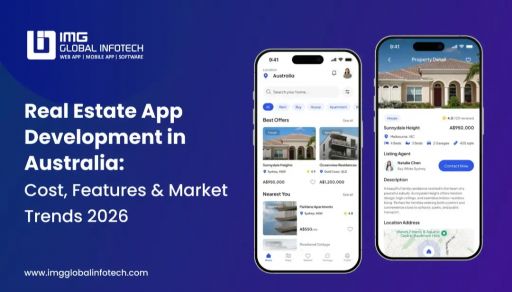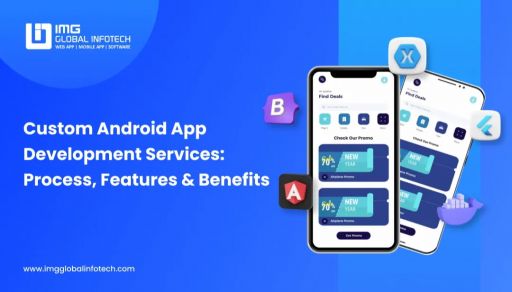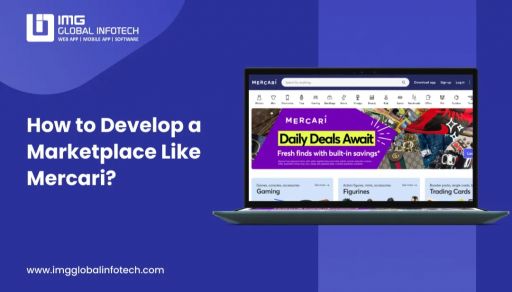Mobile App Maintenance Cost: A Complete Guide
Neeraj Rajput
Jul 07, 2025

Launching a mobile app is just the beginning of its journey. To keep it running smoothly, secure, and competitive in this fast-paced digital world, regular maintenance is essential. Whether it’s fixing bugs, updating to new operating systems, or improving performance based on user feedback, mobile app maintenance plays a vital role in ensuring long-term success.
But how much does maintaining an app really cost? And what factors influence that cost?
In this complete guide, we’ll break down everything you need to know about mobile app maintenance costs, from the types of maintenance services to cost-influencing factors, average price ranges, and how to optimize your budget without compromising quality. Whether you're a startup founder or an enterprise CTO, this blog will help you plan better for the post-launch lifecycle of your app.
Why Mobile App Maintenance Is Essential for Long-Term Success?
Building a mobile app is not a one-time effort, it’s an ongoing process. As user expectations, technologies, and market dynamics evolve, your app needs to stay updated and functional to remain competitive. Here's why regular mobile application maintenance is critical:
1. Ensure Compatibility with OS Updates
Both Android and iOS frequently roll out operating system updates. If your app isn't updated accordingly, it may malfunction, crash, or be removed from app stores.
2. Fix Bugs and Performance Issues
Even after rigorous testing, bugs can emerge once the app is live. Regular maintenance of mobile apps helps identify and resolve these issues before they impact user experience.
3. Improve User Experience
User expectations change rapidly. App maintenance allows you to refine the UI/UX, optimize speed, and make usability improvements based on user feedback.
4. Enhance Security
Outdated code or third-party libraries can open the door to vulnerabilities. Maintenance ensures your app complies with the latest security standards and protocols.
5. Add New Features
To stay ahead of competitors, you must continually innovate. Maintenance includes perfective updatesadding features or refining functionalities to boost engagement.
6. Prevent App Abandonment
Users are quick to uninstall apps that lag, crash, or look outdated. Maintenance helps keep your app stable, relevant, and engaging, reducing churn.
7. Maintain Backend Infrastructure
Server-side updates, database optimizations, and API upgrades are all part of regular maintenance to ensure smooth data handling and uninterrupted service.
Types of Application Maintenance Services

Maintaining a mobile app isn’t just about fixing bugs, it's about adapting to evolving user needs, technologies, and platforms. Below are the key types of app maintenance services that ensure your mobile app stays high-performing, secure, and aligned with your business goals.
1. Corrective Maintenance
Corrective maintenance focuses on identifying and resolving existing issues that negatively impact the functionality of your app. These problems often emerge after the app is live and are typically reported by users or monitoring tools. This type of maintenance ensures your app continues to function as intended without interruptions.
2. Adaptive Maintenance
Technology is constantly evolving, and your app must adapt to changes in its external environment to remain functional. Adaptive maintenance involves updating your app to stay compatible with changes in operating systems, device models, APIs, hardware, and legal or regulatory requirements.
3. Perfective Maintenance
Perfective maintenance involves improving and enhancing the app over time based on user feedback, analytics, and market trends. It includes feature updates, UI/UX improvements, and performance optimizations that make the app more appealing and user-friendly.
4. Preventive Maintenance
This proactive maintenance type focuses on identifying potential issues before they occur. It involves code audits, performance reviews, security scans, and optimization techniques that enhance the overall stability and lifespan of the app.
5. Emergency Maintenance
Emergency maintenance is unplanned and executed in response to critical issues that disrupt the normal operation of the app. These could be sudden crashes, server failures, data breaches, or any major functionality failure that requires immediate resolution.
How Much Does It Cost to Maintain An App?
The cost of maintaining a mobile app varies depending on several factors such as app complexity, platform, update frequency, backend infrastructure, and third-party integrations. On average, mobile app maintenance costs range between 15% to 25% of the initial mobile app development cost annually.
Key Factors That Influence App Maintenance Cost
Mobile app maintenance cost is not fixed, various factors impact how much you’ll need to invest post-launch. Understanding these key factors will help you plan your budget effectively and avoid unexpected expenses.
1. App Complexity and Features
The more complex your app is, the more maintenance it will require. Apps with advanced features such as real-time tracking, payment integration, time tracking software, AI functionality, or third-party APIs often demand more frequent updates and testing.
2. Number of Platforms Supported
Maintaining a native app on both Android and iOS doubles the testing, updates, and bug fixing required. Cross-platform apps may reduce some effort but can still require platform-specific tweaks.
3. Backend Infrastructure and Hosting
If your app relies on a complex backend with real-time databases, cloud storage, or content delivery networks (CDNs), server maintenance and infrastructure costs can be significant.
4. Third-Party Integrations
Apps that integrate third-party tools (payment gateways, chat SDKs, analytics platforms, etc.) need regular updates to ensure compatibility and security, especially when those services change or update their APIs.
5. Frequency of Updates and Feature Enhancements
Frequent updates to add features, fix bugs, or improve UI/UX will naturally increase maintenance costs. Businesses aiming to stay competitive and user-focused should factor in ongoing development.
6. Security and Compliance
Maintaining app security is an ongoing task. Regular vulnerability scanning, encryption updates, and compliance with privacy regulations like GDPR, HIPAA, or India's DPDP Bill add to maintenance efforts.
7. User Support and Monitoring Tools
Apps need constant monitoring to track crashes, performance issues, and usage behavior. Tools like Firebase, Sentry, or Crashlytics come with associated costs and require development team involvement to act on the insights.
8. App Store & Licensing Requirements
Annual fees for app store accounts, license renewals for third-party tools, and mandatory app store compliance updates (especially from Apple) are recurring maintenance components.
9. UI/UX Modernization
Design trends evolve quickly, and keeping your app interface modern, accessible, and aligned with current standards is vital to retaining users, especially for consumer-facing apps.
>>>Also Read:- Top Mobile App Development Companies in 2026
10 Tips to Optimize App Maintenance Cost
While mobile app maintenance is vital for ensuring performance and user satisfaction, it doesn't have to strain your budget. With smart planning and strategic decision-making, businesses can optimize costs without compromising on app quality. Here's how:
1. Choose the Right Tech Stack from the Start
One of the most effective ways to reduce long-term app maintenance costs is by selecting the right technology stack during the development phase. Opt for technologies that are widely adopted, well-documented, and actively supported by a strong community. Frameworks like React Native, Flutter, and modern backend solutions such as Node.js or Laravel are great examples. A future-proof tech stack ensures easier updates, better scalability, and lower chances of running into compatibility or support issues down the road.
2. Follow Clean and Modular Coding Practices
Clean and modular code is easier to understand, maintain, and scale. Developers can update or debug specific components without affecting the entire system, which reduces time and cost. Following best coding practices such as code commenting, proper naming conventions, and separating logic into manageable modules helps streamline future enhancements and bug fixes. Well-documented code also allows any developer, internal or external, to efficiently work on your app without having to start from scratch.
3. Automate Testing and Monitoring
Automation can significantly cut down the cost and time involved in identifying and fixing issues. Implementing automated testing frameworks for functional, UI, and regression testing allows developers to catch bugs early in the development cycle. Additionally, real-time monitoring tools like Firebase Crashlytics, Sentry, and New Relic can track performance issues, crashes, and user behaviors. These insights help in proactively resolving problems before they affect user experience or turn into expensive emergencies.
4. Schedule Regular Updates Instead of Emergency Fixes
Emergency fixes are often time-sensitive, unplanned, and more costly due to their urgency. A better approach is to schedule regular updates and maintenance sessions. These updates can include minor bug fixes, performance improvements, and security patches. By maintaining a predictable update cycle you can reduce the risk of unexpected failures while maintaining better control over budget and developer resources.
5. Minimize Third-Party Dependencies
While third-party APIs and SDKs can speed up development, they often introduce dependencies that require frequent updates and compatibility checks. If these tools change their pricing, shut down, or become incompatible, it can disrupt your app’s performance and increase maintenance efforts. Use only essential third-party tools with a strong reputation and ongoing support. Periodically review and audit these dependencies to ensure they’re still the best fit for your app.
6. Use Cross-Platform Development When Possible
Developing a single codebase for both Android and iOS using frameworks like Flutter or React Native can drastically reduce application maintenance costs. Cross-platform apps are easier to manage since updates, bug fixes, and improvements need to be made just once, rather than separately for each platform. This not only reduces development time but also lowers the cost associated with testing and quality assurance across different devices.
7. Partner with a Reliable Maintenance Team or Company
Outsourcing your app maintenance to a professional mobile app development company can be more cost-effective than maintaining an in-house team, especially for startups and SMBs. Reliable app development companies offer flexible maintenance plans tailored to your app’s scale and requirements. They bring expertise, consistent support, and clear service-level agreements (SLAs), ensuring that issues are resolved quickly and efficiently without unexpected costs.
8. Prioritize Features Based on User Feedback
Not every feature request or enhancement needs to be implemented immediately. Use user feedback, analytics, and behavioral data to identify which updates or fixes will offer the most value. This helps you allocate resources more efficiently by focusing only on what’s essential, avoiding unnecessary feature overload and reducing the scope of future maintenance work.
9. Monitor App Store Guidelines
Both Apple and Google frequently update their app store policies, and non-compliance can lead to rejections or even removal from the store. Staying informed about these changes helps you make necessary updates in advance, avoiding emergency fixes, penalties, or re-submission delays. Regular reviews of app metadata, privacy policies, and compliance checklists will ensure a smoother maintenance process and uninterrupted visibility in app stores.
10. Invest in Preventive Maintenance
Preventive maintenance is a forward-looking approach that focuses on avoiding problems before they arise. This includes regularly checking for performance bottlenecks, security vulnerabilities, or outdated code. Preventive actions like code refactoring, database optimization, and load testing can extend the life of your app and reduce the likelihood of expensive breakdowns. Think of it like routine servicing for your app. It keeps things running smoothly and saves money in the long run.
Conclusion
Mobile app maintenance is not just a post-launch formality, it's a continuous investment in your app’s stability, performance, and user satisfaction. From fixing bugs and ensuring security to updating for new OS versions and enhancing user experience, maintenance plays a vital role in extending your app’s lifecycle and protecting your ROI.
While mobile app maintenance costs can vary based on app complexity, platform, and business needs, proactive planning and optimization can significantly reduce long-term expenses. Whether you're a startup with a simple MVP or an enterprise managing a complex mobile ecosystem, understanding the different types of app maintenance services and the key cost factors allows you to make smarter budgeting decisions.
 Real Estate App Development in Australia: Cost, Features & Market Trends 2026
Real Estate App Development in Australia: Cost, Features & Market Trends 2026 How Much Does Jewelry Website Development Cost?
How Much Does Jewelry Website Development Cost? The Importance of Hiring the Right iOS Developers for Your Mobile App
The Importance of Hiring the Right iOS Developers for Your Mobile App Custom Android App Development Services: Process, Features & Benefits
Custom Android App Development Services: Process, Features & Benefits How to Develop a Marketplace Like Mercari?
How to Develop a Marketplace Like Mercari?
Neeraj Rajput is the co-founder of a leading IT company with over a decade of experience in technology consulting, product development, and digital transformation. With a passion for solving complex business challenges through smart tech solutions, he shares insights on innovation, leadership, and the evolving IT landscape









